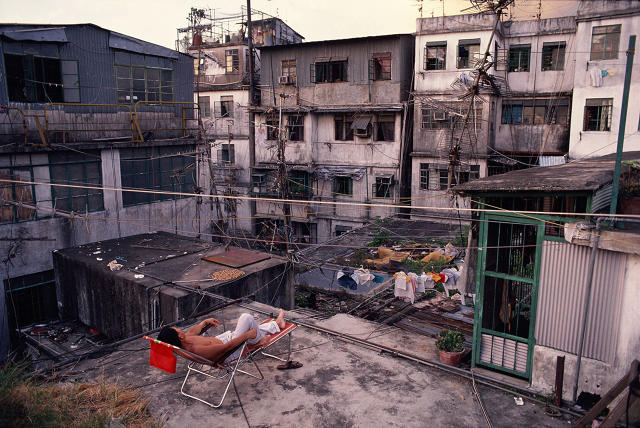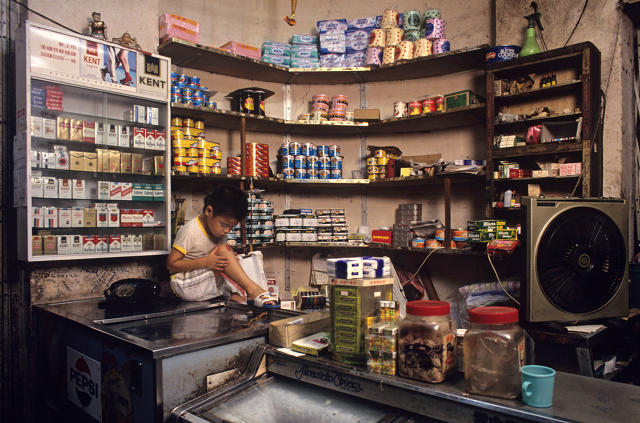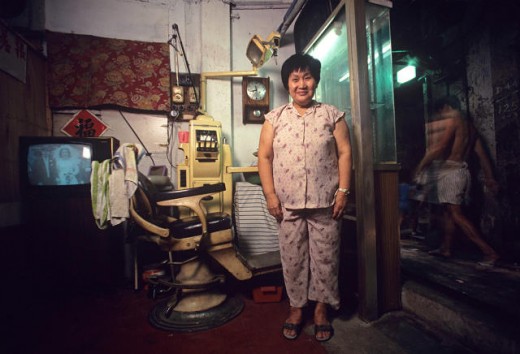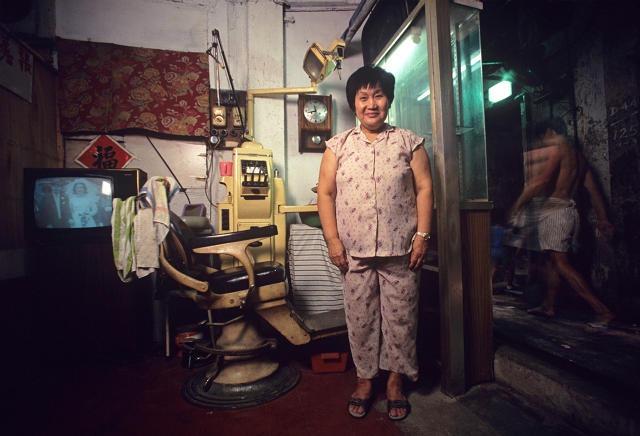These Stunning Photos Show Life On The Densest City Block On Earth
Before it was demolished, Hong Kong’s Kowloon Walled City was a marvel of urban life. Its dark, vibrant imagery has influenced pop culture in ways you don’t even realize.
Kowloon Walled City was once the densest city block in the world, with 33,000 people and 1,000 businesses squeezed into tiny shacks stacked 14 stories high. Photographer Greg Girard, who lived in Hong Kong in the mid-1980s, stumbled on the development one night when he was shooting pictures of the nearby airport.
“I went around the corner, and this sort of building-like thing loomed at the end of the block,” he says. “It didn’t fit in with the rest of the city at all. It looked almost medieval, with electricity—this sort of super-dense, homemade-looking super-building that took up an entire block.”

Girard realized it was the Kowloon Walled City—a place notorious at the time for lawlessness. Thanks to a jurisdictional quirk in Hong Kong’s complicated colonial history, the area was mostly outside the government’s control. In pre-Internet days, it was also something that was hard to research. He went in.
“It was extraordinary,” he says. “Hong Kong in the 1980s was already a modern city, connected to the rest of the world. This place just seemed so much outside of everything that Hong Kong was. You kind of wondered how something like this could exist in modern Hong Kong.”
He didn’t take photos that first night. “People were kind of hostile,” he says. “It was clear they weren’t happy to see someone with a camera and tripod.” But Girard went back later, and slowly began to get to know the community and document it.

Later, he met another photographer who was working in Kowloon Walled City, and they decided to make a book together.
At the time, little had been written about the community other than some sensationalized accounts of crime. “Everyone was recycling those old stories and tropes of sex and violence and drugs,” says Girard. While crime still existed, the photographers found that the neighborhood wasn’t that different than other low-income communities in Hong Kong. It just existed in an extraordinary setting.
Residents were packed in next to tiny plastic factories, butchers, cotton mills, and unlicensed dentists. “It was an incredible din, incredible smells,” Girard says. “It was a rank and kind of fetid atmosphere. A lot of wet and squishy stuff underfoot, you’re not quite sure what it is. It was a real assault on the senses.”
Working with a graduate student, the photographers started collecting stories from residents, many of whom had escaped as refugees from Mao’s China. They gathered everything into a book called City of Darkness.

As the book came out, shortly before Hong Kong was handed back to China, the government finally moved everyone out of the neighborhood and tore it down. “The final year I lived in Hong Kong, the Walled City was already being emptied out, so it was sort of losing its life, that vibrancy, that fully lived-in, every-space-occupied vitality was being drained steadily away,” he says. “We photographed it as a real super-alive thing, both the community and the buildings.”
Last year, in honor of the 20th anniversary of the demolition, the photographers revisited the book and came out with a new edition—this time interviewing officials who weren’t able to talk the first time around, and exploring all of the ways that the city has influenced pop culture, from Batman Begins to video games.
The new book, City of Darkness: Revisited, includes over 300 stunning photos.
“Rather than just do another print run of the book, we really felt it was time to update the book with the unexpected influence the Walled City had,” says Girard.
[All Photos: Greg Girard]
Fast Company , Read Full Story
(125)



